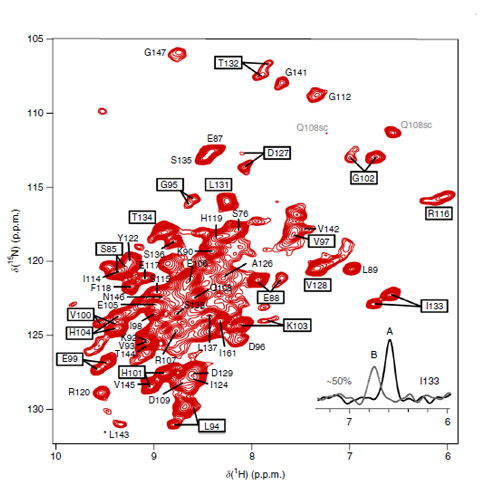The chaperone αB-crystallin uses different interfaces to capture an amorphous and an amyloid client
12-Oct-2015
Nature Structural & Molecular Biology, 22, 898–905, doi:10.1038/nsmb.3108
Nature Structural & Molecular Biology, online article
Small heat-shock proteins, including αB-crystallin (αB), play an important part in protein homeostasis, because their ATP-independent chaperone activity inhibits uncontrolled protein aggregation. Mechanistic details of human αB, particularly in its client-bound state, have been elusive so far, owing to the high molecular weight and the heterogeneity of these complexes. Here we provide structural insights into this highly dynamic assembly and show, by using state-of-the-art NMR spectroscopy, that the αB complex is assembled from asymmetric building blocks. Interaction studies demonstrated that the fibril-forming Alzheimer's disease Aβ1–40 peptide preferentially binds to a hydrophobic edge of the central β-sandwich of αB. In contrast, the amorphously aggregating client lysozyme is captured by the partially disordered N-terminal domain of αB. We suggest that αB uses its inherent structural plasticity to expose distinct binding interfaces and thus interact with a wide range of structurally variable clients.











